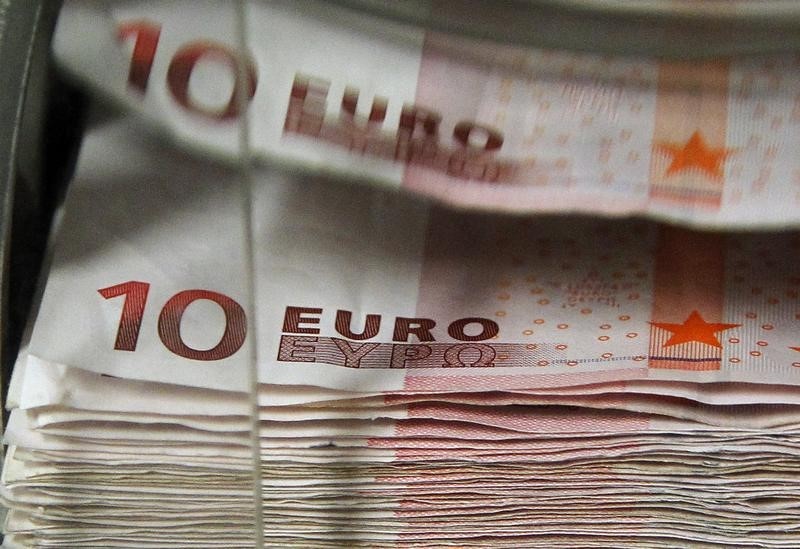Investing.com - The euro slid to the day’s lows on Monday after data showing that growth in the euro area’s private sector slowed to a 16-month low in in May, despite solid growth in Germany and France, as other areas struggled.
EUR/USD was down 0.17% at 1.1203, re-approaching last Thursday’s two-month lows of 1.1179.
The preliminary reading of the euro zone composite purchasing managers’ index, which measures the combined output of both the manufacturing and service sectors, ticked down to a 16-month low of 52.9 from 53.0 in April.
Economists had expected the index to rise to 53.2.
The rate of business activity expansion in the dominant service sector was unchanged for a third successive month. But the rate of manufacturing output growth was the second-weakest since February 2015, the report said.
The slowdown in economic activity highlighted the challenges facing the European Central Bank in its attempts to spur growth and inflation in the region.
“A disappointing flash euro zone PMI for May adds further to the suggestion that the robust pace of economic growth seen in the first quarter will prove temporary. The PMI is signaling lackluster GDP growth of only 0.3% in the second quarter,” Chris Williamson, chief economist at Markit said.
The report came after similar surveys showed that German private sector activity accelerated for first time in 2016 in May, despite a slower rise in new business.
French private sector activity grew at the fastest pace in seven months in May.
The euro hit one-week lows against the yen, with EUR/JPY down 0.65% at 122.83.
The yen strengthened earlier after data showing that Japan posted a much larger-than-forecast trade surplus in April as exports fell at the fastest rate in three months.
A separate report showed that Japanese factory activity contracted at the fastest pace in over three years in May as new orders fell.
The downbeat data added to pressure on the Bank of Japan to step up economic stimulus measures.
The U.S. dollar index, which measures the greenback’s strength against a trade-weighted basket of six major currencies, was steady at 95.28, not far from Thursday’s two-month highs of 95.51.
Demand for the dollar continued to be underpinned after last week’s Federal Reserve April meeting minutes revived expectations for higher interest rates.
Officials said a June rate hike would be appropriate if economic data indicated that growth was picking up in the second quarter and employment and inflation were firming.
The U.S. central bank hiked rates in December for the first time in almost a decade.
